South Central Nebraska
Jennifer Rees, Extension Educator in York County, reported extensive hail damage in Clay County and other areas of south central Nebraska from Tuesday's storm. Some corn, she noted, was able to start recovery with the warmer temperatures and dry conditions later in the week. The photo shows hail-damaged V6 corn by Deweese. (6/15/17)
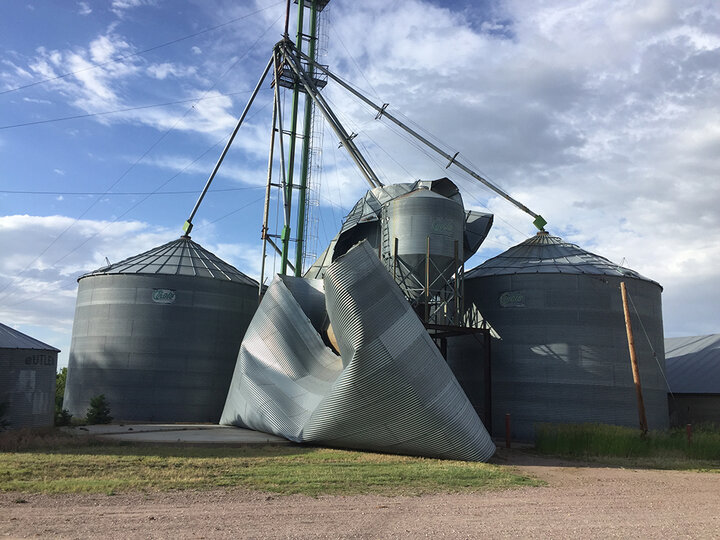
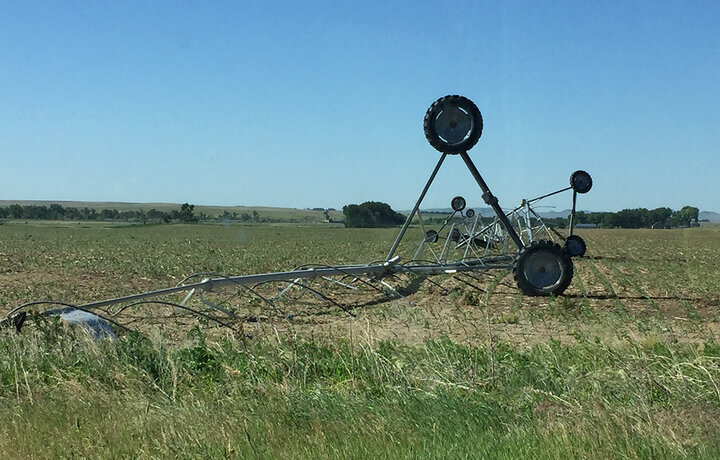
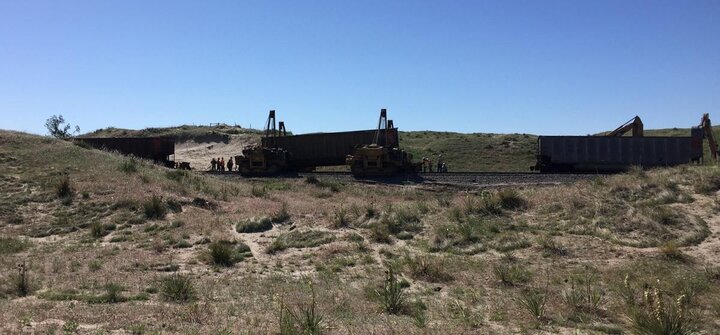
June 12 Storm Damage near Bayard
Severe storms with high winds, hail and at least one tornado swept through the Bayard area southeast of Scottsbluff early in the evening of June 12, turning over pivots, uprooting trees, damaging farm buildings, and causing some crop injury. John Thomas, Extension Educator in Box Butte County, and Jim Schild, Extension Educator in Scotts Bluff County, shared photos of some of the damage. When their field survey is completed, the National Weather Service will release its report at http://www.weather.gov/cys/June12DamageSurvey. (6/13/17)
(Photos by John Thomas)
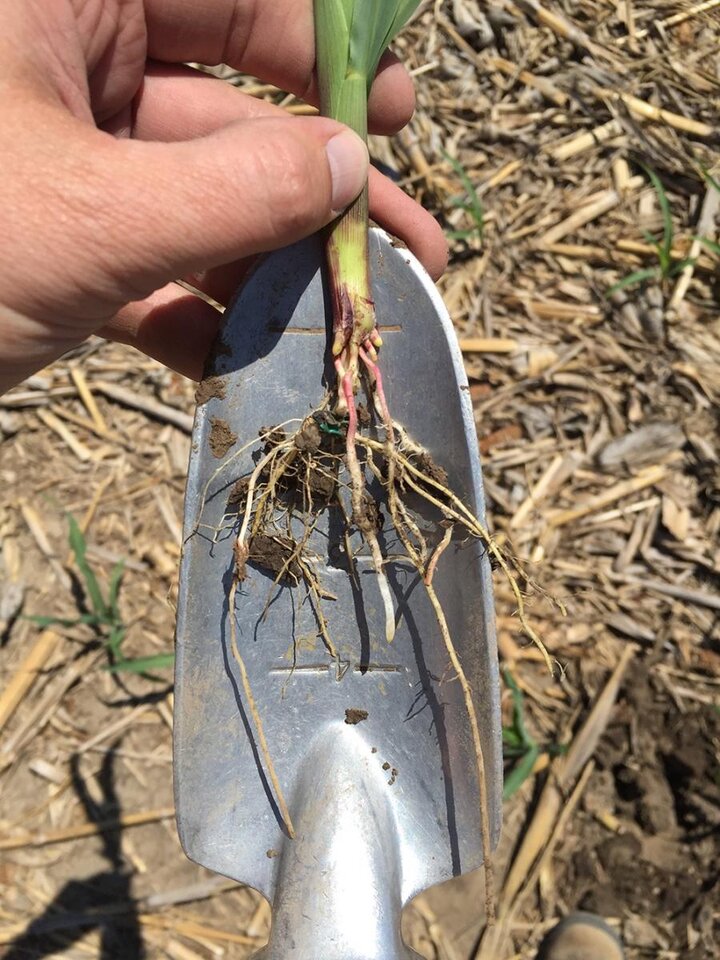
Nebraska Extension Crop Reports (6/13/17)
Keith Jarvi, Extension Educator in Thurston Counties: Crops are all planted and the first cutting of alfalfa is done, but we haven’t gotten any rain since May 22-23, except for a small storm over Coleridge two weeks ago. We need rain. There’s a lot of spraying for weeds and concern about weed escapes from early treatments.
Nathan Mueller, Exension Educator in Dodge County: We haven’t seen rain since May 21-22 and the top soil is pretty dry and causing problems with root development in corn. Nodal roots are growing, but some are stunted due to dry, hard topsoil. A little rain could really help. Some growers are running their pivots to moisten the topsoil and get up late-planted soybeans. The lack of moisture is also causing some weed management problems. Some growers did a preemergence application before planting, but with little rain to activate the herbicides, weeds are getting a foothold. The first alfalfa cutting is done.
Justin McMechan, Crop Protection and Cropping Systems Specialist: In insect surveys last week we found wheat stem maggots, stalk borers and some chinch bugs in corn in south central Nebraska and wireorms in soybeans in Saunders County.
Wayne Ohnesorg, Extension Educator in Madison County: We’ve had some isolated storms, but haven’t gotten a lot of moisture and, with these high temperatures, are seeing a lot of leaf rolling in corn. We’re seeing a lot of spider mites in horticulture, which may indicate a problem developing for crops.
Ron Seymour, Extension Educator in Adams County: Corn here is in the 5- to 7-leaf stage and looks very good. Soybeans are at V2-V3 and starting to look good now that we’re getting past that cold period. Wheat has headed and is turning color. We’re seeing some stripe rust in wheat. Alfalfa is mostly through its first cutting. We got 0.60 of rain last week, but plants have already used it up. A few pivots were running this week to activate herbicides. With the windy conditions complicating spraying, growers have had a hard time making timely herbicide applications.
Karen DeBoer, Extension Educator in Cheyenne County: We’ve had some spotty thunderstorms and hail and are seeing wheat streak mosaic (especially east of Sidney) and stripe rust in wheat. Planes have been spraying on fungicide. Corn and dry beans look good.

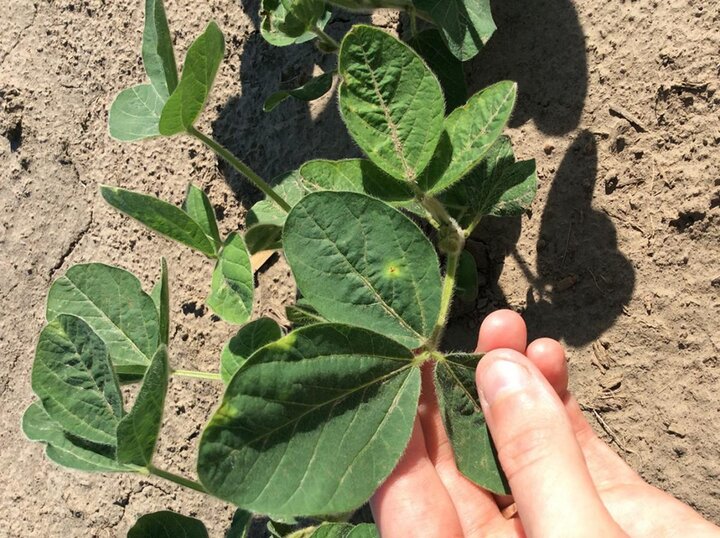
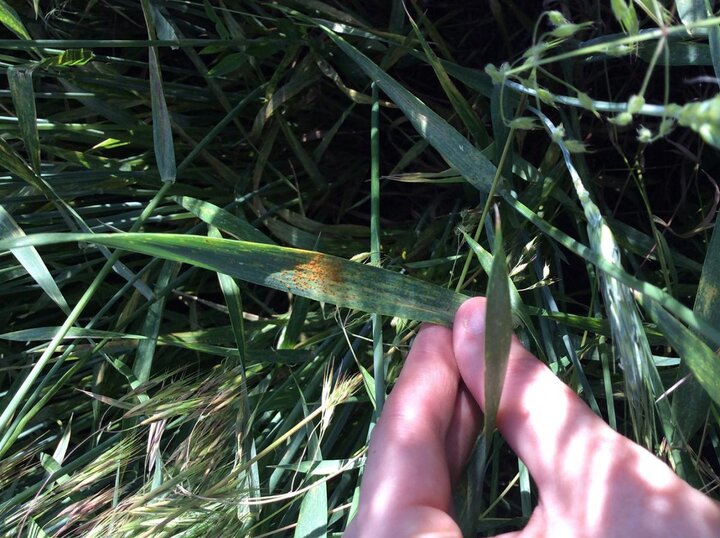
(Photos by Sarah Schlund)
Sarah Schlund, Extension Educator in Dawson County: Crops look pretty good in this part of the state. Soybeans range from VE to V2. I scouted last Friday and saw some crusting in spots in the field that reduced stands, but not to the point of replanting. There was some post-emergence herbicide damage (looked like a growth regulator and photosystem II inhibitors), bacterial blight, and leaf feeding. Corn ranges from V1 (seed corn fields) to V8 (field corn). The heat from this past weekend caused the corn to roll, especially where irrigation pipe had not been set yet. A lot of post-emergence herbicides are being applied right now and some folks are side-dressing nitrogen. Weed control seemed to be an issue in a few fields this spring, but otherwise corn looks pretty good in our area. I am seeing some fields with Palmer amaranth and common waterhemp seedlings, so we need to be careful about scouting and getting those taken care of before the crops and the weeds get too tall.
I scouted a couple wheat fields and saw both stripe and leaf rust on the flag leaf. Wheat was past pollination and the heads were starting to get a golden hue to them. A lot of alfalfa has been cut or has already been baled at this point. We had issues with alfalfa weevil larvae this spring so a lot of hay was cut early instead of spraying for weevils. Some growers did spray and fields that didn’t get infested are either still standing or are just getting cut for the first time this year. We are definitely not in full swing yet for irrigating, but some growers are running their pivots, especially during this heat. (6/12/17)

